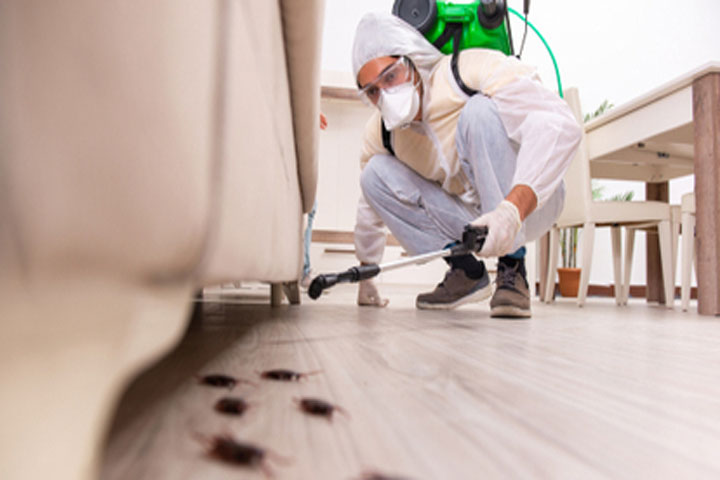Chicago Crawler Extermination Services: Safe and Reliable Removal
A Comprehensive Guide to the Different Sorts Of Bug Control Methods
With the myriad of bug control methods offered, it can be overwhelming to locate the most reliable option for a certain bug trouble. In this thorough overview, we will certainly explore these various kinds of bug control approaches, offering understandings right into their applications and advantages. By the end, you will have a clearer understanding of which method may be the ideal fit for your pest control demands.
Chemical Insect Control Methods

One usual type of chemical pest control is pesticides. Pesticides target certain bugs, such as mosquitoes, termites, or ants, and can be used both inside your home and outdoors.
One more kind of chemical bug control is rodenticides. These are chemical substances created to control populations of rats, such as rats and mice.
Weed awesomes, additionally called herbicides, are an additional type of chemical insect control method. Herbicides are made to selectively kill unwanted plants, referred to as weeds, without creating injury to preferable plants. They are generally utilized in agriculture, landscape design, and gardening to control the growth of unwanted greenery.
While chemical bug control techniques can be very efficient in removing bugs, it is vital to use them deliberately and follow safety and security guidelines. Overuse or abuse of chemical pesticides can have unfavorable effect on human health and wellness and the atmosphere. It is important to employ these approaches properly and take into consideration different bug control strategies whenever feasible.
Organic Insect Control Techniques
Biological parasite control approaches include using living microorganisms or natural compounds to handle and control pest populaces. Unlike chemical approaches, which often rely upon artificial chemicals, biological control approaches make use of the all-natural enemies of pests to control their populations. This strategy is considered even more environmentally friendly and lasting, as it decreases using harmful chemicals and decreases the danger of chemical resistance.
One commonly utilized organic pest control approach is the introduction of natural predators or parasites. Ladybugs are presented to regulate aphids, while specific wasp species are released to target caterpillars. These killers and parasites eat insects, lowering their numbers and preventing invasions.
One more organic control technique is the use of virus. Particular microorganisms, viruses, and fungi can be employed to infect and kill details pests. For instance, the microorganism Bacillus thuringiensis is frequently used to regulate caterpillars, as it creates toxins that are deadly to these pests.
Biological control approaches can also include using scents or natural compounds that interrupt the mating patterns of pests. By hindering their recreation, these methods aid to lower pest populations gradually.
While biological parasite control methods are typically reliable, they may call for longer durations to achieve preferred results compared to chemical techniques. Additionally, mindful factor to consider needs to be provided to the choice and launch of natural adversaries to avoid unplanned harm to valuable organisms or ecosystems.
Physical Parasite Control Approaches
To successfully manage and regulate pest populaces, alternative parasite control techniques known as physical pest control methods are used. Another physical parasite control approach is the installation of fencings or wall surfaces to keep larger pests, such as deer or bunnies, out of gardens or agricultural fields. Physical pest control techniques are an eco friendly alternative to chemical pesticides, as they do not count on the use of harmful chemicals.
All-natural Pest Control Techniques
All-natural insect control approaches provide a lasting and environmentally friendly strategy to managing and getting rid of parasites. These techniques focus on making use of all-natural substances and biological representatives, minimizing the need for chemical pesticides that can hurt the environment and human wellness. One of the most typical natural insect control techniques is biological Visit Your URL control. This entails introducing natural killers or parasites to prey on or parasitize the pests. Ladybugs are often presented to yards to regulate aphid populaces. An additional natural approach is using repellents originated from plants. Certain plants, such as marigolds, lavender, and peppermint, release fragrances that repel pests like mosquitoes, flies, and ants. Additionally, cultural control practices can be employed to avoid and handle bug problems. This consists of correct cleanliness, routine upkeep, and promoting biodiversity in the garden. Turning crops, removing yard debris, and encouraging natural killers can aid prevent Website the buildup of pests. By taking on these all-natural bug control techniques, individuals and neighborhoods can successfully take care of pests while decreasing the adverse effects on the environment and human wellness.
Integrated Bug Management (IPM)
Integrated Bug Administration (IPM) is a detailed and systematic strategy to pest control that integrates numerous techniques and methods to properly manage pests while reducing the use of chemical pesticides. IPM intends to keep pest populations below the economic injury level by using a combination of cultural, biological, and chemical control techniques.
Cultural control techniques include customizing the atmosphere to make it much less positive for pests. This can include practices such as crop turning, correct cleanliness, and the use of resistant plant ranges. By producing undesirable problems for bugs, social control approaches can considerably decrease pest populations.

Chemical control approaches are utilized as a last resort in IPM. They involve the targeted and sensible use chemicals to handle pest populaces. Unlike standard bug control approaches, IPM aims to minimize using chemical pesticides find out this here by employing alternate strategies.
Integrated Insect Management (IPM) is a proactive method that concentrates on long-term bug administration as opposed to depending entirely on reactive procedures. By integrating several control methods, IPM gives a more sustainable and eco-friendly approach to pest control.
Final Thought
It reviewed chemical, organic, physical, and all-natural parasite control methods, as well as the integrated pest management method. By comprehending these different techniques, people can make enlightened choices on which pest control method is most suitable for their specific demands and choices.